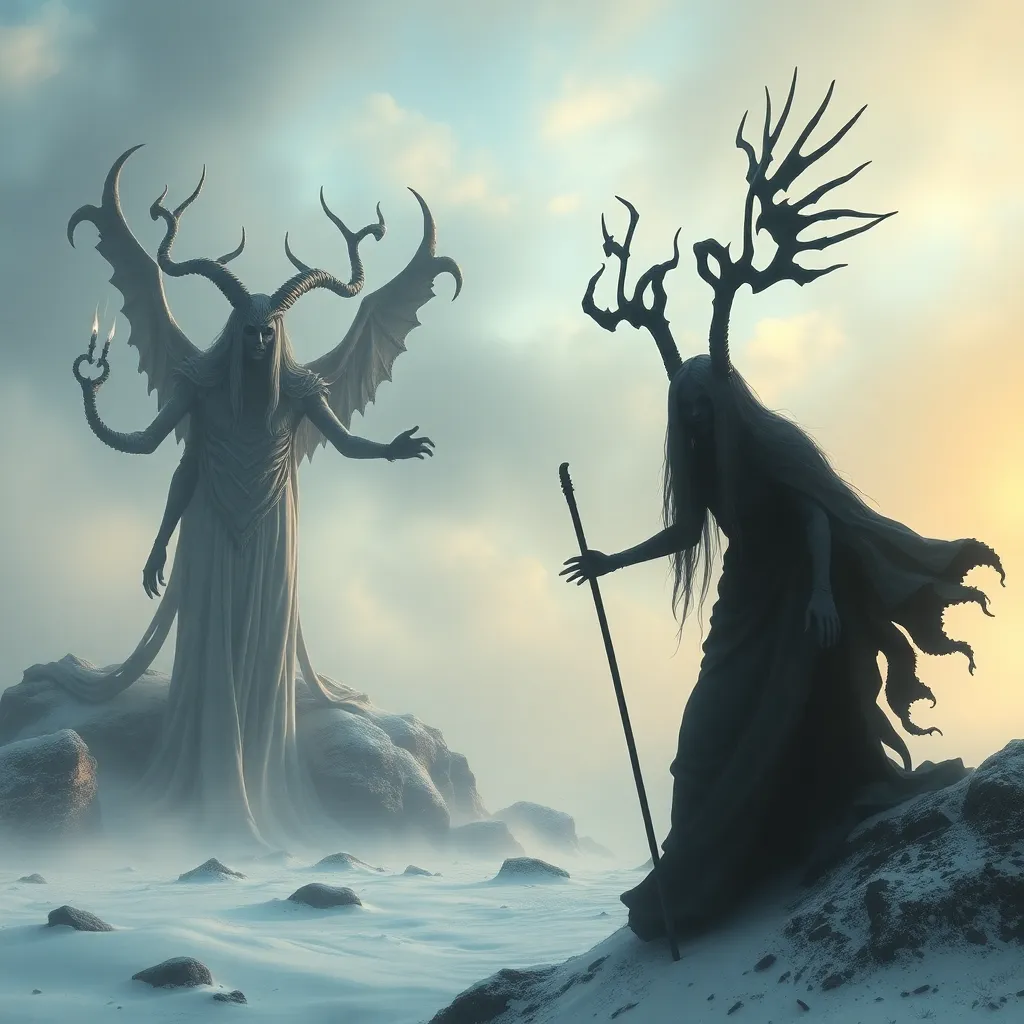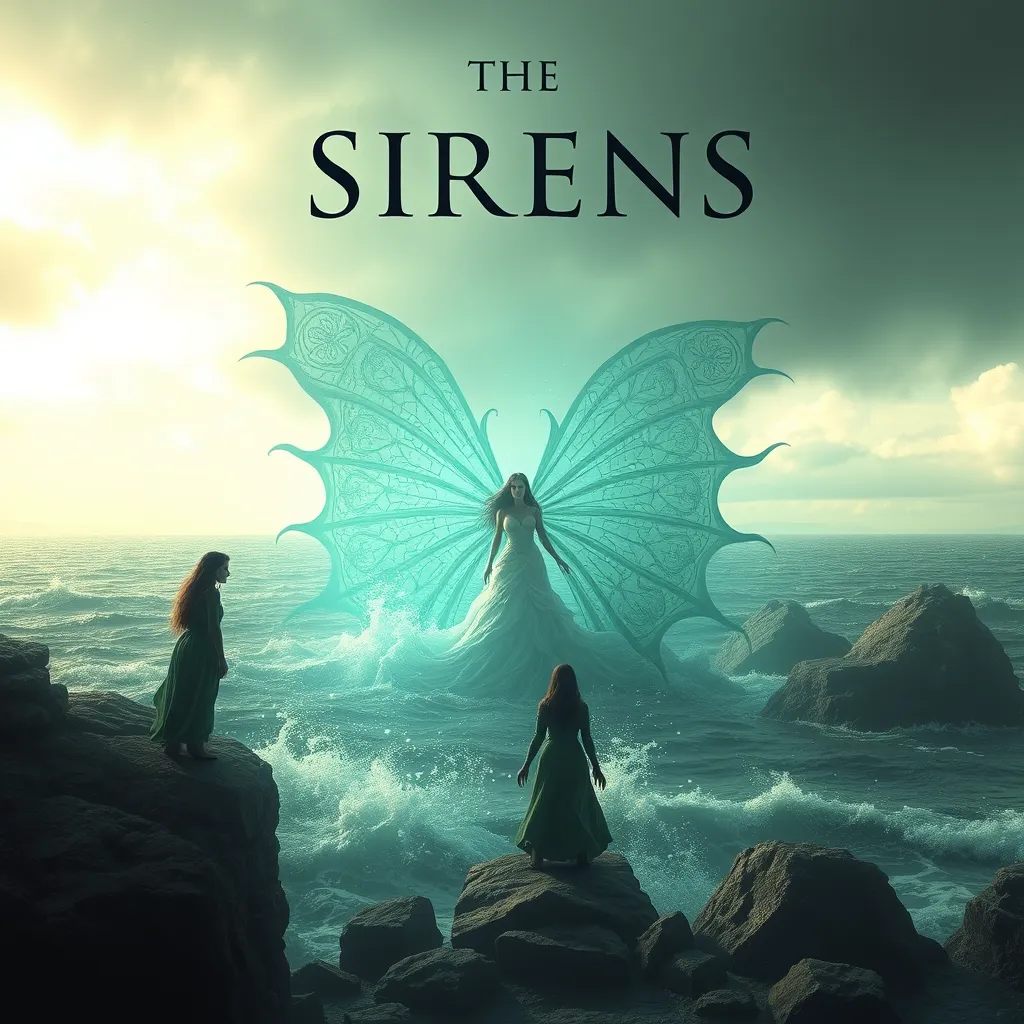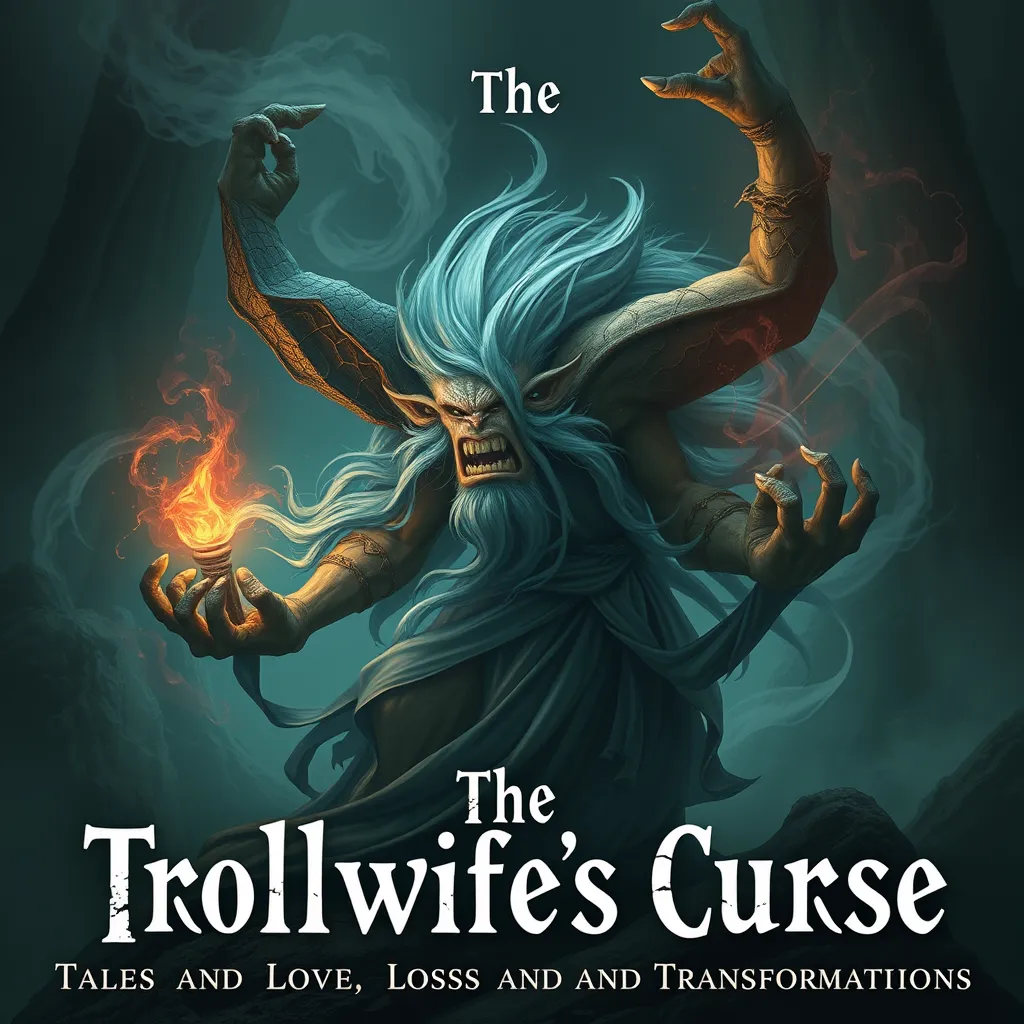The Restless Souls of the Norse: Exploring the Draugr and the Ghostly Valkyries
I. Introduction
Norse mythology, rich with tales of gods, heroes, and the supernatural, has captivated the human imagination for centuries. At the heart of these stories lies a profound understanding of life and death, which is intricately woven into the cultural fabric of the Norse people. The afterlife, viewed as an extension of the earthly realm, was a significant aspect of their beliefs, guiding their actions and shaping their worldview.
Among the most intriguing figures in Norse mythology are the Draugr and Valkyries. These entities represent different aspects of death and the afterlife, each playing a unique role in the Norse understanding of mortality and the eternal journey of the soul.
II. Understanding the Draugr
A. Definition and characteristics of Draugr
Draugr, often referred to as the undead or revenants, are the corporeal remnants of those who died. Unlike traditional zombies, Draugr possess intelligence, strength, and a sense of purpose. They are not merely mindless creatures but are often depicted as having a will of their own.
B. Origin stories and cultural significance
The origins of the Draugr can be traced back to Norse burial practices and beliefs surrounding death. In Norse culture, it was believed that the dead could return to haunt the living, particularly if they were not properly honored or laid to rest. The Draugr serves as a reminder of the importance of funerary rites and the respect owed to the deceased.
C. Physical traits and powers attributed to Draugr
Draugr are typically described as having a ghastly appearance, with decayed flesh and glowing eyes. Some of their notable powers include:
- Superhuman strength
- Shape-shifting abilities
- The ability to control the weather
- Immortality, as they cannot be easily killed again
III. The Role of Draugr in Norse Society
A. The perception of death and the undead in Norse traditions
In Norse traditions, death was not seen as the end but rather as a transition to another state of existence. The Draugr embodied the unresolved ties to the living, representing those who might have died a violent or untimely death. This belief served to reinforce societal norms regarding the treatment of the dead.
B. The Draugr as protectors of burial sites and treasures
Interestingly, Draugr were often seen as guardians of their graves and the treasures buried with them. It was thought that they would defend their earthly possessions from grave robbers and intruders, leading to various folktales of encounters with these fearsome beings.
C. Folktales and legends involving encounters with Draugr
Numerous legends feature encounters with Draugr, often highlighting the consequences of disrespecting the dead. These stories serve as moral lessons, emphasizing the importance of honoring ancestors and the proper treatment of burial sites.
IV. Valkyries: The Choosers of the Slain
A. Introduction to Valkyries and their purpose in Norse mythology
Valkyries, meaning “choosers of the slain,” are powerful female figures tasked with selecting those who would die in battle and those who would be taken to Valhalla, the hall of the slain. They serve Odin, leading the souls of fallen warriors to their final resting place.
B. The connection between Valkyries and Valhalla
Valhalla is a majestic hall where warriors who died bravely are welcomed. The Valkyries play a crucial role in this process, embodying the ideals of valor and honor in Norse culture. Those chosen by the Valkyries were believed to join Odin and prepare for Ragnarök, the ultimate battle.
C. Depictions of Valkyries in art and literature
Throughout history, Valkyries have been depicted in various forms of art and literature, from ancient texts to modern reinterpretations. They are often portrayed as fierce warriors, clad in armor, with wings or helmets, symbolizing their role as both protectors and guides for the souls of the bravest fighters.
V. Comparing Draugr and Valkyries
A. Key differences in purpose and representation
While both Draugr and Valkyries are significant figures in Norse mythology, their purposes differ greatly:
- Draugr are embodiments of the unresolved ties of the dead, often tied to their burial sites.
- Valkyries are divine beings responsible for guiding the souls of warriors to Valhalla.
B. Thematic connections between the two entities
Despite their differences, both Draugr and Valkyries represent the Norse view of death as a journey rather than an end. They embody the complexities of existence after death, highlighting the significance of honor, bravery, and the impact of one’s life on their afterlife.
C. How each embodies the Norse views on death and the afterlife
In essence, Draugr reflect the consequences of an unfulfilled life, while Valkyries symbolize the honor associated with a noble death. Together, they illustrate the multifaceted nature of Norse beliefs regarding mortality.
VI. The Legacy of Draugr and Valkyries in Modern Culture
A. Influence on contemporary literature, film, and video games
The enduring appeal of Draugr and Valkyries has permeated modern culture, inspiring countless works in literature, film, and video games. From fantasy novels to blockbuster movies, these figures continue to capture the imagination of audiences worldwide.
B. Revival of interest in Norse mythology and its figures
In recent years, there has been a resurgence of interest in Norse mythology, with both Draugr and Valkyries being featured prominently in various media. This revival reflects a growing fascination with ancient cultures and their beliefs, particularly in relation to themes of death and the afterlife.
C. How Draugr and Valkyries reflect modern anxieties about death
In a world where death often feels distant or taboo, the stories of Draugr and Valkyries provide a means of exploring and confronting these anxieties. They remind us of the inevitability of death and the importance of how we live our lives.
VII. Conclusion
The Draugr and Valkyries hold significant places in Norse mythology, each representing different facets of the human experience of death. Through their stories, we gain insight into the Norse understanding of mortality, honor, and the afterlife. The legacy of these figures endures, reflecting a timeless fascination with the mysteries of life and death.
As we continue to explore the intersection of myth and the human experience, Draugr and Valkyries remind us that our beliefs about death can shape how we live, guiding us toward a deeper understanding of our mortality.
VIII. Further Reading and Resources
A. Recommended texts on Norse mythology
- The Prose Edda by Snorri Sturluson
- The Poetic Edda translated by Carolyne Larrington
- Norse Mythology by Neil Gaiman
B. Suggested documentaries and films
- Vikings (TV Series)
- How to Train Your Dragon (Film Series)
- Valhalla Rising (Film)
C. Online resources and scholarly articles for deeper exploration
- Encyclopedia Britannica – Norse Mythology
- Norse Mythology for Smart People
- JSTOR – Scholarly Articles on Norse Mythology



